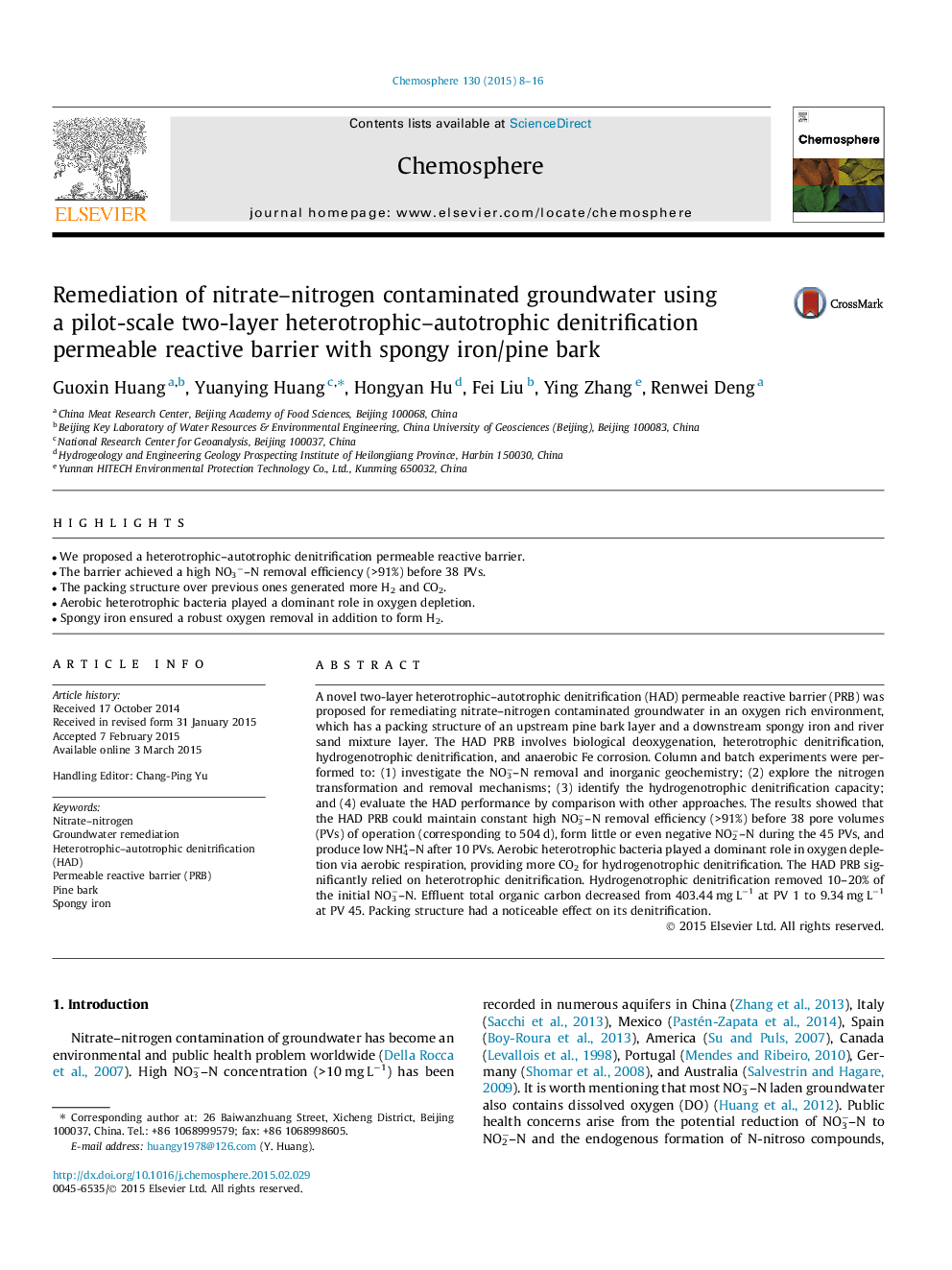| کد مقاله | کد نشریه | سال انتشار | مقاله انگلیسی | نسخه تمام متن |
|---|---|---|---|---|
| 4408317 | 1618841 | 2015 | 9 صفحه PDF | دانلود رایگان |
• We proposed a heterotrophic–autotrophic denitrification permeable reactive barrier.
• The barrier achieved a high NO3−–N removal efficiency (>91%) before 38 PVs.
• The packing structure over previous ones generated more H2 and CO2.
• Aerobic heterotrophic bacteria played a dominant role in oxygen depletion.
• Spongy iron ensured a robust oxygen removal in addition to form H2.
A novel two-layer heterotrophic–autotrophic denitrification (HAD) permeable reactive barrier (PRB) was proposed for remediating nitrate–nitrogen contaminated groundwater in an oxygen rich environment, which has a packing structure of an upstream pine bark layer and a downstream spongy iron and river sand mixture layer. The HAD PRB involves biological deoxygenation, heterotrophic denitrification, hydrogenotrophic denitrification, and anaerobic Fe corrosion. Column and batch experiments were performed to: (1) investigate the NO3−–N removal and inorganic geochemistry; (2) explore the nitrogen transformation and removal mechanisms; (3) identify the hydrogenotrophic denitrification capacity; and (4) evaluate the HAD performance by comparison with other approaches. The results showed that the HAD PRB could maintain constant high NO3−–N removal efficiency (>91%) before 38 pore volumes (PVs) of operation (corresponding to 504 d), form little or even negative NO2−–N during the 45 PVs, and produce low NH4+–N after 10 PVs. Aerobic heterotrophic bacteria played a dominant role in oxygen depletion via aerobic respiration, providing more CO2 for hydrogenotrophic denitrification. The HAD PRB significantly relied on heterotrophic denitrification. Hydrogenotrophic denitrification removed 10–20% of the initial NO3−–N. Effluent total organic carbon decreased from 403.44 mg L−1 at PV 1 to 9.34 mg L−1 at PV 45. Packing structure had a noticeable effect on its denitrification.
Journal: Chemosphere - Volume 130, July 2015, Pages 8–16
